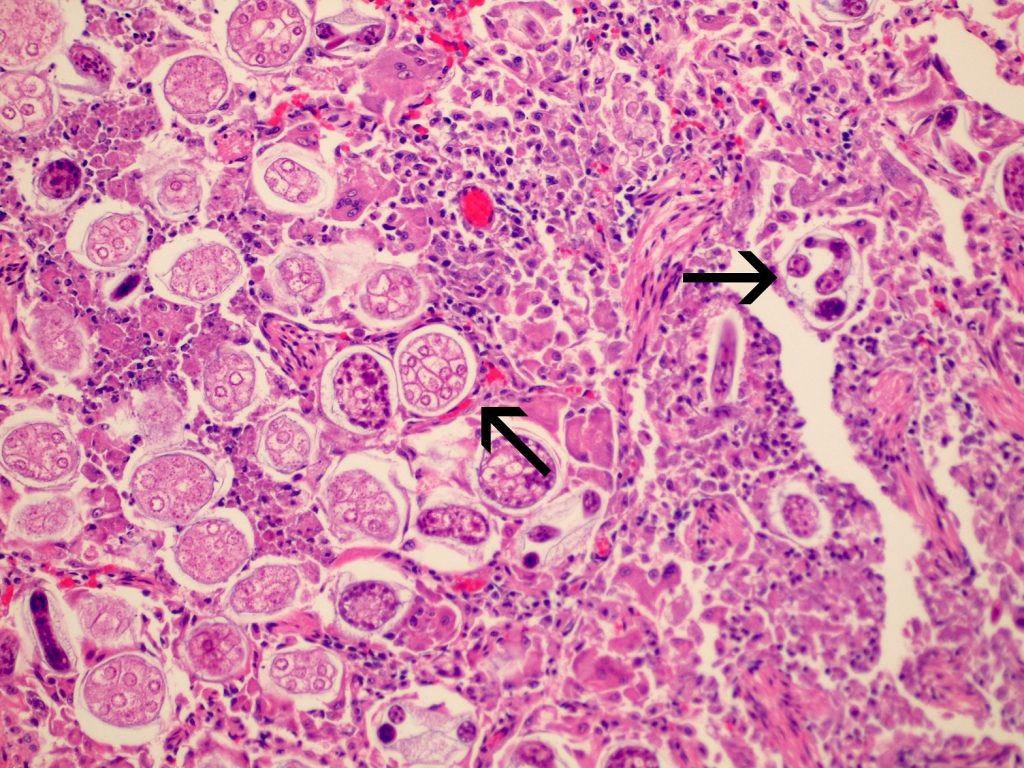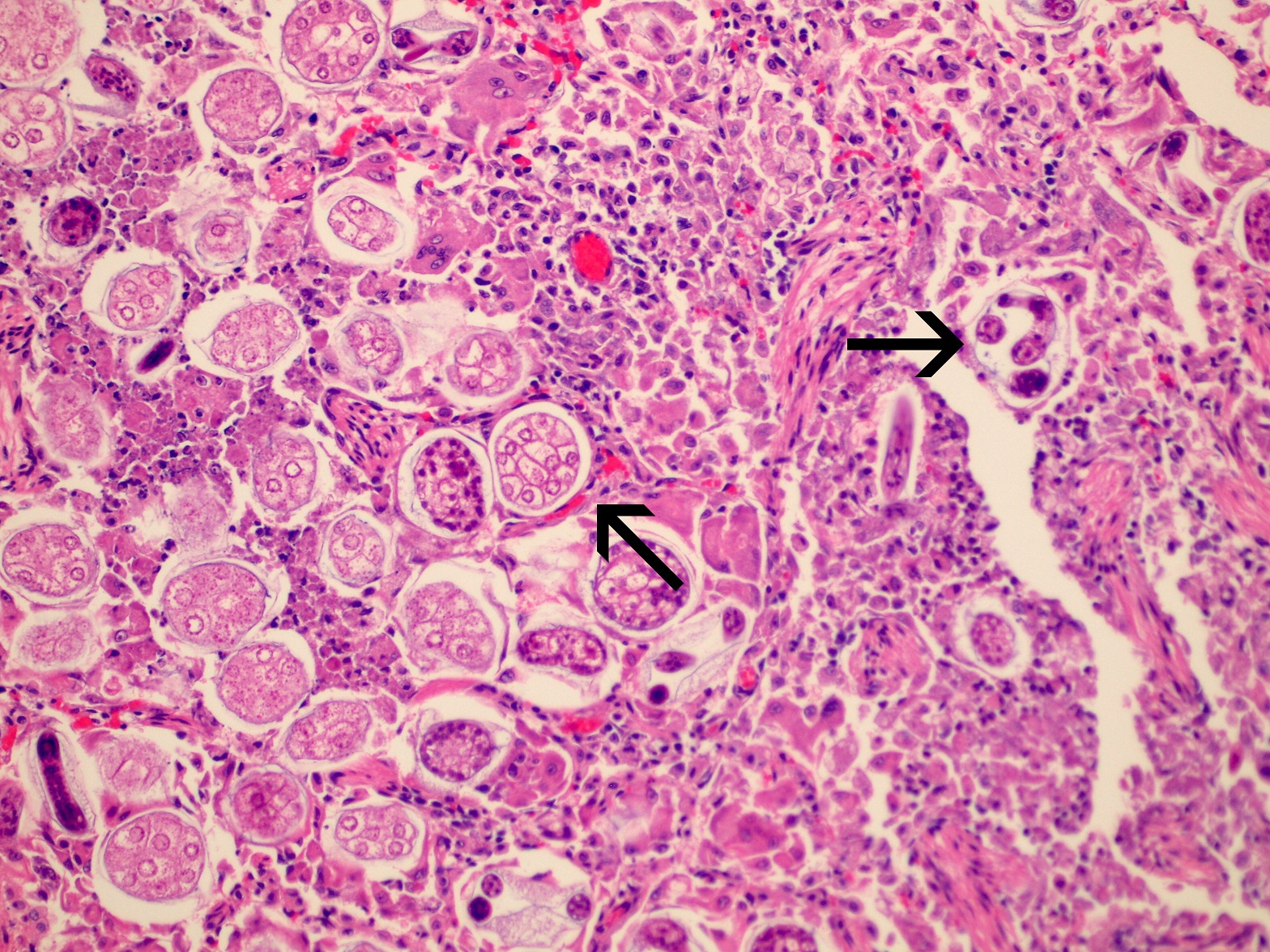BERNIE VAATSTRA

Clinical history:
An 8-week-old male Domestic Shorthair rescue kitten died overnight three days after being castrated, vaccinated and transported. A post-mortem was conducted and samples collected for histopathology .
Laboratory testing:
Sections of heart, liver, spleen, pancreas, stomach and small intestine were unremarkable. Examination of the large and small airways of the lung revealed numerous nematode larvae and eggs accompanied by degenerate granulocytes, multinucleated giant cells, and karyorrhectic debris. See photograph 1.
Diagnosis:
Pulmonary aelurostrongylosis—severe, chronic, multifocal, necrotising and granulomatous bronchointerstitial pneumonia.
Discussion:
The kitten had severe pulmonary disease associated with lungworm infection. Larval morphology was compatible with Aelurostrongylus abstrusus.
Aelurostrongylus abstrusus has an indirect life cycle. Cats are the definitive host and may be infected by slugs or snails as the intermediate host or rodents, birds or reptiles as paratenic hosts. The pre-patent period is 35-48 days. Infections range from subclinical to severe infestations resulting in respiratory distress. Young cats and outdoor/free-ranging cats at greater risk. The lung lesions in the present case were severe enough to explain severe respiratory distress and death.
Reference:
Elsheikha HM, Schnyder M, Traversa D, et al. Updates on feline aelurostrongylosis and research priorities for the next decade. Parasites & Vectors. 9:389, 2016. https://doi.org/10.1186/s13071-016-1671-6
Many thanks to the Napier SPCA for this interesting case.

